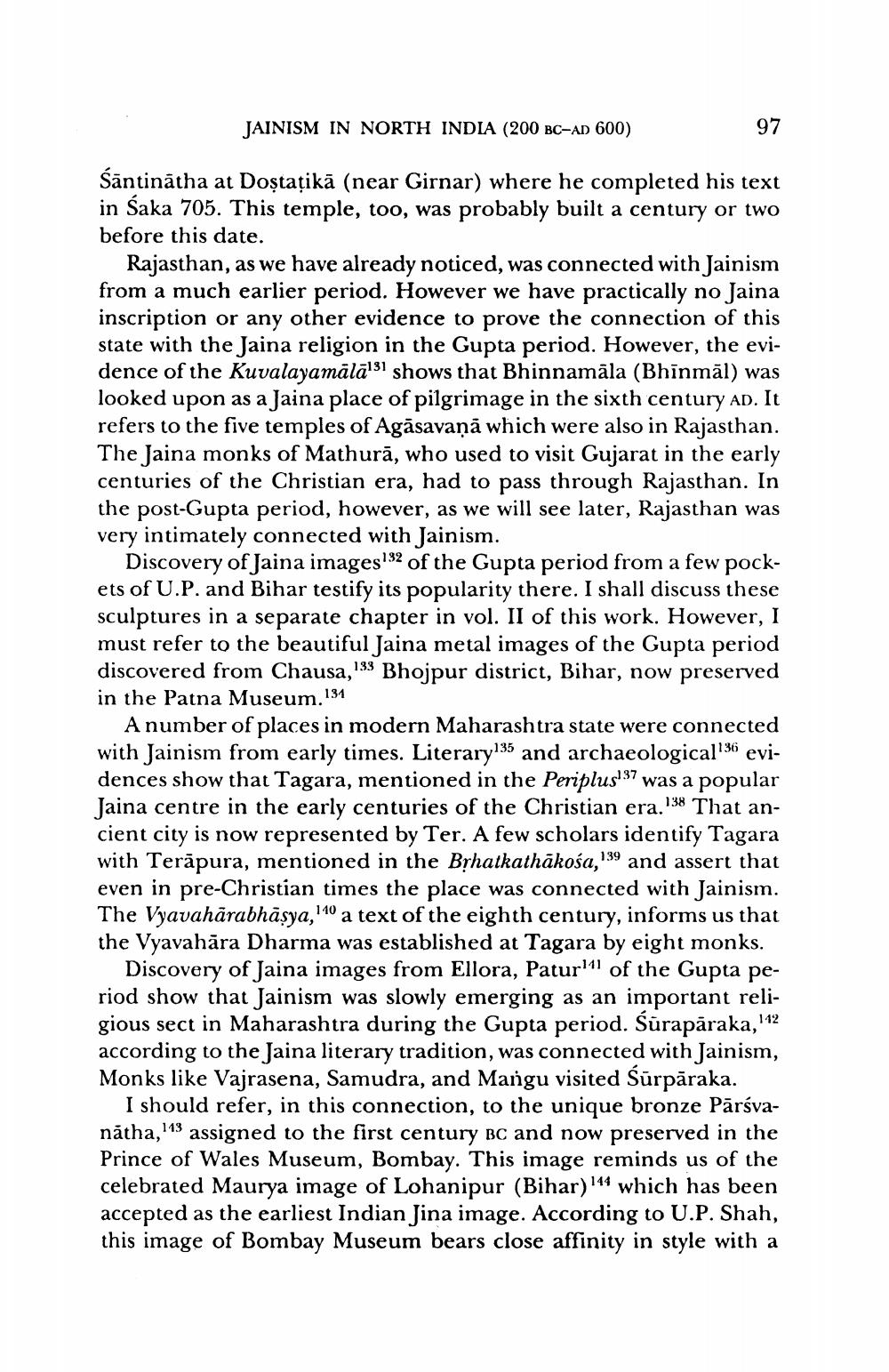________________
JAINISM IN NORTH INDIA (200 BC-AD 600)
97
III.
śāntinātha at Doștaţikā (near Girnar) where he completed his text in Saka 705. This temple, too, was probably built a century or two before this date.
Rajasthan, as we have already noticed, was connected with Jainism from a much earlier period. However we have practically no Jaina inscription or any other evidence to prove the connection of this state with the Jaina religion in the Gupta period. However, the evidence of the Kuvalayamālā!31 shows that Bhinnamāla (Bhinmāl) was looked upon as a Jaina place of pilgrimage in the sixth century AD. It refers to the five temples of Agāsavaņā which were also in Rajasthan. The Jaina monks of Mathurā, who used to visit Gujarat in the early centuries of the Christian era, had to pass through Rajasthan. In the post-Gupta period, however, as we will see later, Rajasthan was very intimately connected with Jainism.
Discovery of Jaina images\32 of the Gupta period from a few pockets of U.P. and Bihar testify its popularity there. I shall discuss these sculptures in a separate chapter in vol. II of this work. However, I must refer to the beautiful Jaina metal images of the Gupta period discovered from Chausa,133 Bhojpur district, Bihar, now preserved in the Patna Museum.134
A number of places in modern Maharashtra state were connected with Jainism from early times. Literary135 and archaeological136 evidences show that Tagara, mentioned in the Periplus 37 was a popular Jaina centre in the early centuries of the Christian era.138 That ancient city is now represented by Ter. A few scholars identify Tagara with Terāpura, mentioned in the Byhatkathākośa,139 and assert that even in pre-Christian times the place was connected with Jainism. The Vyavahārabhāsya, 110 a text of the eighth century, informs us that the Vyavahāra Dharma was established at Tagara by eight monks.
Discovery of Jaina images from Ellora, Paturl11 of the Gupta period show that Jainism was slowly emerging as an important religious sect in Maharashtra during the Gupta period. Sūrapāraka, 142 according to the Jaina literary tradition, was connected with Jainism, Monks like Vajrasena, Samudra, and Mangu visited Sūrpāraka.
I should refer, in this connection, to the unique bronze Pārsvanátha,143 assigned to the first century BC and now preserved in the Prince of Wales Museum, Bombay. This image reminds us of the celebrated Maurya image of Lohanipur (Bihar) 144 which has been accepted as the earliest Indian Jina image. According to U.P. Shah, this image of Bombay Museum bears close affinity in style with a




